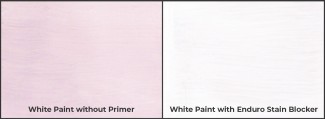

It depends on the type of use you plan for your butcher-block top and the look you want.
If it is a statement piece and not intended for high use, almost any finish would work. General Finishes Arm-R-Seal Topcoat is a good choice. If you intend to prep or chop food General Finishes Butcher Block Oil should be applied.
Butcher Block Oil is a natural protectant for all wood surfaces that come in contact with food. Use this oil-based finish on wood cutting boards, utensils, bowls and butcher blocks.
Wow! Look at this great butcher block by Ultimate DIY Guy!
It would depend on whether you plan to use the furniture outside or under the protection of a roof. Theoretically, both water and oil-based products could be used.
For example, you could "antique" wicker with thinned Gel Stain to pop up the color depth on an aging piece of natural wicker. However, Gel Stain is not exterior-rated and is very thick, making it cumbersome to apply and wipe off on a highly textured surface such as wicker.
GF has two products that would work well.
For non-professional finishers, we recommend using General Finishes Arm-R-Seal Topcoat.
Should I use a topcoat or a wax over my paint or stain finish?
The GF gang gets this question all the time.
You can reduce the glossiness of a sheen several ways.
MDF (Medium Density Fiberboard) is tricky because there are several grades of MDF and the quality varies.
If you cannot determine the quality of the MDF, play it safe and use best practices. The concern is with the edges and ends. The core of MDF is compressed sawdust, glue and resins so when you apply paint to those areas it soaks right up.

Recommended for use on Interior/exterior wood applications such as raw wood, existing finishes, and MDF.
This is General Finishes' most advanced primer, and it is the most expensive. If bleed-through is NOT a concern, use one of our other physical primers: Enduro White Undercoat or Enduro Deep Base Primer.
Results and features you can expect include:
You can apply Gel Stain to MDF, stained surfaces